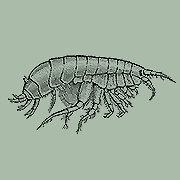PROJECT OVERVIEWThe main objective of WINAMP project is to check whether there is a shift in amphipods' feeding strategy during winter time in Arctic glacial fiord. Lysianassoid amphipods are important members of many marine communities dominating the necrophagic fauna in polar shallow-water environments. Distribution patterns and feeding strategies of lysianassoid amphipods in shallow waters of Kongsfjorden are well recognized. However, so far, the amphipods studied there were collected in summer when the fiord habitats provide relatively good feeding opportunities and the sampling localities are easily accessible. Little is known about their trophic strategies during the remaining seasons, but considerable dietary shifts can be assumed. Dietary composition of each species collected in Kongsfjorden differs significantly from that of all other species. First sampling site of our study was located in the south-eastern part of the glacial bay of the fjord, at the depth profile of 5-15-25-35m. Onisimus caricus, which feeds mainly on the dead zooplankton, is the most abundant species there. The other station will be located at the same depth range near the Ny Alesund station. Anonyx sarsi, feeding mainly on polychaetes, Orchomenella minuta (detritus feeder) and Onisimus edwardsi (omnivorous species) are likely to be found there. These locations allows both to collect different feeding type species of amphipods and compare the feeding strategies of species. Additionally, zooplankton and benthic organisms were sampled as potential food items for the amphipods in different parts (glacial and central basin) of the fiord. OBJECTIVESThe main aim of this research is to answer the question whether there is a shift in amphipods' feeding strategy during winter time in Arctic glacial fjord. Our research would not only allow to determine the amphipods feeding habits but also would be an important input into the knowledge of both winter zooplankton and benthic communities. Detailed objectives are: - to determine survival strategy of amphipods by studying their diet during winter time by combined lipid, stable isotopes and digestive tract content analysis - to study the zooplankton community as the potential source of food for amphipods - to study species composition and abundance of benthic items as the potential source of food for amphipods |
 |
WINTER SHIFT IN AMPHIPODS' FEEDING STRATEGY?
Expedition WINAMP 2009: Institute of Oceanology PAN & ARCFAC V ARCFAC-026129-2009-28; RIS ID: 3410
|